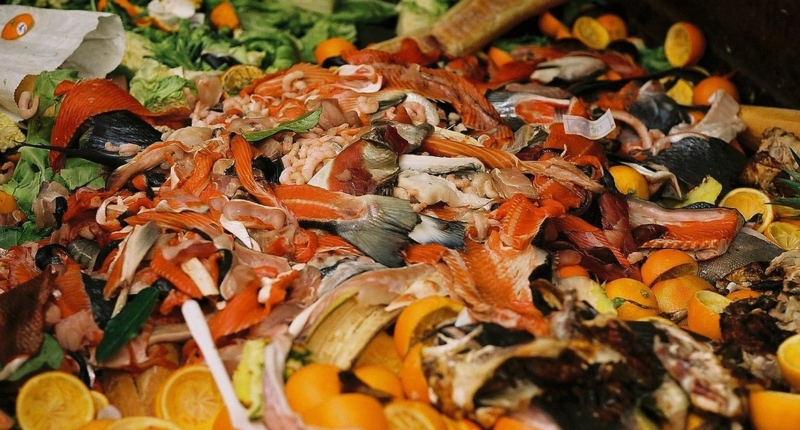Climate change poses a significant threat to North Carolina’s food system. However, the state could build a more resilient local food system that prioritizes food waste recovery, cultivator support, local food infrastructure, and addressing racial inequities in the food sector to reduce vulnerability to climate change. The North Carolina Local Food Council provides resources to support these efforts. According to a recent study, nearly 60% of the anticipated warming by the end of the century is due to methane emissions, which have a short lifespan in the atmosphere. Therefore, taking rapid action in this sector could significantly slow down the rate of warming associated with the food industry. Urgent action is required to address these challenges and ensure that the global population has access to nutritious food.
Urgent Action Needed to Combat Climate Change in the Food Sector, According to Study

A recent study published in Nature Climate Change has revealed that if no action is taken, the global food sector alone could contribute to nearly 1 degree Celsius of climate warming by the year 2100. However, the same study also found that over 50% of this anticipated warming could be avoided if several changes were made simultaneously in production and food waste systems, the energy sector, and universal diet changes.
Estimating the impact of agriculture on global warming is challenging, as the agricultural sector emits several climate pollutants, including carbon dioxide, methane, and nitrous oxide. To simplify estimation of emissions, a strategy called “carbon dioxide equivalents” is often employed. However, this method puts all emissions on a comparable scale, which makes it easier to measure the aggregate impact. Nevertheless, different pollutants remain in the atmosphere for varying amounts of time and trap different amounts of heat. Focusing solely on carbon dioxide emissions risks blurring the actual picture of agricultural emissions and the measures required to address them.
Methane is one of the most significant pollutants from the agricultural sector, having a shorter lifespan in the atmosphere than carbon dioxide but having a greater warming effect on the atmosphere per mass. Consequently, looking at a long-term timescale in carbon dioxide equivalents would downplay the role of methane emissions in the agriculture industry.
To obtain a more accurate understanding of how different pollutants could impact global warming by 2100, the researchers had to evaluate emissions individually, rather than as an aggregate. This revealed that reporting emissions explicitly by gas is vital when performing lifecycle assessments to reduce future uncertainty.
The study analyzed literature on the food sector, including agriculture, fisheries, and ranching, among others. One of the key findings was that meat and dairy consumption would be responsible for over half of food-associated warming by 2030, continuing through 2100.
The study recommends several strategies to reduce global warming in the food sector, such as curbing food waste, optimizing agricultural production practices, and universal diet changes. If these measures are taken, it could significantly lessen the anticipated effects of climate change. Immediate action is needed to combat climate change in the food sector and prevent further deterioration of the environment.
Study Shows Mitigating Global Warming in the Food Sector Requires Structural and Behavioral Changes
A recent study published in Nature Climate Change explored four possible arenas to mitigate anticipated warming in the food sector, namely production, consumption, the energy sector, and food loss/waste. According to the study, optimizing agricultural production practices could contribute 25% of possible reductions by 2100, while decarbonizing the energy sector by 2050 could decrease anticipated warming by 17% by the end of the century.
Furthermore, shifting to a global diet based on health recommendations could reduce projected warming by 21%, and cutting consumer and retail food waste by 50% could decrease anticipated warming by 9%. However, making any changes on a global scale remains difficult, although taking a simplified approach could allow people to see the full extent of what could be possible with these kinds of shifts.
The researchers emphasized that both supply-side and consumer-side interventions at multiple scales would be crucial to reduce anticipated warming in the food sector. Furthermore, factors beyond greenhouse gases must be considered, such as the impact of food production techniques on the environment and land and ocean use.
“In order to make meaningful change in this sector, which is a really essential aspect of human life, we really need a multi-angle approach,” said Catherine Ivanovich, the study’s lead author and a doctoral candidate in the Department of Earth and Environmental Sciences at Columbia University. “We can really work towards increased food security and providing people with nutritious diets, all the while working towards a more climate-safe future.”
Building Resilience in Local Food Systems to Combat Climate Change
The North Carolina Local Food Council highlights the threat that climate change poses to the state’s food system. However, building a more resilient local food system that focuses on food waste recovery, better support for cultivators, local food infrastructure, and addressing racial inequities in the food sector could reduce the state’s vulnerability. The council’s website provides resources to support these efforts.
The study also found that 60% of the warming by the end of the century is due to methane emissions, which have a short lifespan in the atmosphere. Therefore, rapid changes in this sector could significantly slow down the rate of warming associated with the food industry. However, urgent action is necessary to address these challenges and ensure global population’s access to nutritious food.
Don’t miss interesting posts on Famousbio










